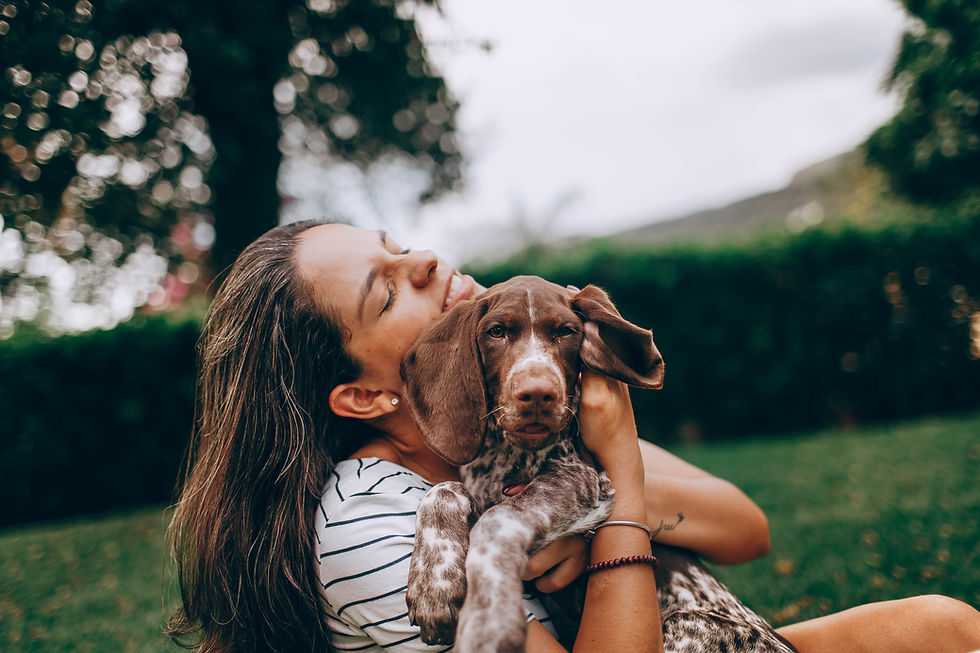How To Socialize A Reactive Dog
- Renée at Bravo Dog

- 3 days ago
- 3 min read
Updated: 2 days ago
Is It Even Possible?
This is probably the most common question that dog guardians ask when they are faced with reactive behaviour. I think it's really important to breakdown some misinformation and provide some facts when it comes to dog socialization.

What Socialization Is
Socialization refers to the process of exposing a puppy to a variety of people, animals, environments, and experiences during a critical developmental window. This period, often referred to as the "socialization window," typically occurs between 3 to 14 weeks of age. During this time, puppies are highly receptive to new experiences, and positive interactions can help shape their future behaviour
The impact of socialization is profound. Proper socialization can lead to a well-adjusted dog that is comfortable and confident in different situations. However, poor or inadequate socialization can result in fear, anxiety, and reactive behaviour later in life. It’s essential to expose puppies to a wide range of stimuli during this critical period to help them develop into balanced adults.
Why We Can't Get A Redo
The socialization period is a one-time developmental phase that cannot be fully replicated later in a dog's life. Once this window closes, around 14 to 16 weeks, the brain’s capacity for forming new social connections decreases significantly. While older dogs can still learn and adapt, the ease and effectiveness of socialization are greatly diminished. This is why early and positive exposure is crucial.
For reactive dogs that missed out on proper socialization during this window, it’s important to recognize that while progress can be made, we cannot completely undo or recreate the effects of early socialization. It's important we understand this in order to set realistic expectations for training and integration efforts.
What We Can Do For Adult Dogs
For reactive dogs, integration with other dogs and people must be approached carefully and with a clear understanding of the dog’s limitations. I can teach you protocols and tools to help guide you through this process.
Here are some strategies:
Controlled Environments: Start in environments where the dog feels safe and there is minimal stimulus. Gradually increase exposure to other dogs or people in a controlled manner.
Positive Reinforcement: Utilize marker training in controlled set-ups to help your dog form positive associations with the presence of others.
Desensitization: This technique is where the dog is gradually exposed to the trigger at a distance where they don’t react (under threshold), and then slowly bringing the trigger closer as long as the dog is comfortable.
Management: It’s important to manage the dog’s environment to prevent the rehearsal of the behaviour. The more the behaviour happens, the more ingrained it can become. It also can contribute to "trigger stacking" which will often result in your dog becoming more reactive in the future.
Professional Guidance: Working with a professional who has experience with reactive dogs can be invaluable. After over a decade working with reactivity, I can provide so much insight into the "why's" and the "do's" and "don'ts".
What Are The Limitations?
Some dogs may never be fully comfortable around other dogs or people, and that’s okay. The goal is to manage and reduce reactivity, not necessarily to eliminate it.
Progress can be slow, and setbacks may occur. Patience and consistency are key.
Safety should always be the priority, both for the reactive dog and others.
This approach respects the dog’s emotional well-being and aims for gradual improvement rather than forcing social interactions and setting both you and your dog up to fail.
If someone tells you to just "socialize your dog more", I hope this information provides you with knowledge and confidence to know that if you're working on the above, you're likely on the right track!
.png)




